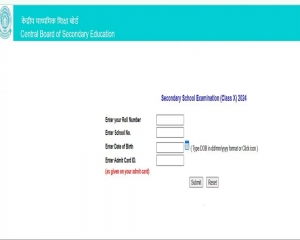Educating SMEs about the global value chain and applying best practices will help them grow their business by strengthening their e-commerce platform
Cross-border trade is an area with great potential. As the fourth digital business revolution begins, e-commerce is democratizing global markets by opening the door for SMEs to do e-business wherever they are. Referring to the digital revolution AI (Artificial Intelligence)while addressing the US Congress during his recent visit to US, Prime Minister Narender Modi defined AI as -America and India. Hope AI partnership potential rises to the next level and will also fuel the e-commerce export potential for Indian SMEs. The bone of the debate is how India can use it with its size and capabilities. India's current e-commerce exports are still well below their potential. E-commerce exports are only $2 billion, which is less than half per cent of $447.46 billion exports in 2022-23.
It is estimated that global e-commerce exports will reach $2 trillion by 2025. To explore the potential of e-commerce in the range of $200 billion to $ 250 billion by 2030, India needs to solve the SME exporter's problems by formulating an E-Commerce Export policy.
However, the new Foreign Trade Policy (FTP) 2023 reflects India's ambition to become an export hub and provides some measures for e-commerce exports. FTP took several initiatives to increase the value limit of exports through couriers by increasing e-commerce exports from Rs 5 lakhs to Rs 10 lakhs per shipment. E-commerce through “Dak Niryat Kendra” to SMEs providing outreach services from states like Punjab and other external border regions to access international markets.
The current regulations place a heavy burden on exporters. The backbone of the Indian economy is 64 million small and medium-sized businesses, which account for 45% of Indian production and 40% of exports. But there are no relevant laws.
Why a Separate E-Commerce Export Policy?
Since the requirements for e-commerce exports are very different from those for general commodity exports, the e-commerce export policy should be a stand-alone document covering all aspects of legal compliance. E-commerce exporters face many challenges, from return policies to payment and compliance issues, and 90% of e-commerce exporters in India are small and medium-sized businesses. To this end, FISME (Indian Small and Medium Enterprises Federation) has conducted detailed studies on the e-commerce export policies of some major countries promoting the e-commerce export business.
India’s SMEs are waiting for the special e-commerce export policy to be enacted as the draft was placed in the public domain in 2019. Since then, the business has grown in many ways but is looking to create a good environment to promote e-exports. The e-commerce export policies of China, South Korea, Japan, Vietnam, and other countries have helped many small and medium-sized businesses to sell worldwide.
At first, China dominated cross-border e-trade, but now even countries like Vietnam and Cambodia have surpassed China because their banks, customs and shipping in the middle are more synchronized for any type of fast international trade.
The E-Commerce policy has to align with the amendments proposed in the Consumer Protection (E-commerce) Law of 2020 by the Department of consumer affairs. In addition to the Direct Foreign Trade Law and the Consumer Protection Law, e-commerce is also regulated by the Information Technology Act and the Competition Act.
Green Channel Needed
It is important to synchronize the entire ecosystem. The e-commerce export policy should be jointly formulated by the customs and the directorate general of foreign trade (DGFT) and Reserve Bank of India(RBI) after necessary changes in their regulations, including redefining the responsibilities of sellers and simplifying payment facilitation, accounts and procedures. National Trade Ecosystem to bring together the RBI, Customs, DGFT, GSTN, India Post, couriers, e-commerce companies and the user to form a centralized technology platform as a single green channel for e-commerce exports, simple documentation and customs clearance for shipments to ensure delivery on time. Another major issue is certificate compatibility. Anyone entering the e-commerce business should be familiar with e-commerce, e-payment, e-signature, e-shipping and other digital solutions.
SMEs rely on online platforms for value-added services such as international expansion and on-time payment guarantees. However, it is said this is against FEMA (Exchange Administration Act) regulations as the platform is responsible for collecting payments while ownership of the product remains with the seller. Refunds are a major issue for third-party e-commerce exporters, and RBI guidelines for business-to-business (B2B) exporters need to be revised accordingly.
The 25% discount limit is limited to e-commerce sales, discounts and returns. Exporters must have annual turnover and all import restrictions must be lifted. These exporters can be facilitated with separate customs clearance regimes for their goods, waive import duties on rejected goods, and treat returned goods as non-commercial goods, reducing costs and expediting the delivery of goods worldwide. It is customary and allows these exporters to refund.
India allows 100% FDI in the e-commerce model but does not allow FDI in the inventory–based model. Sometimes sellers-commerce and e-commerce platforms ignore rules that prohibit high discounts and seller privileges. They also tried to clarify the rules for foreign direct investment in e-commerce.
The way forward
Hope AI (America, India) mutual trust sharing has an opportunity to support our SMEs exports and level the playing field through an e-commerce export policy. Educating SMEs about the global value chain and applying best practices will help them grow their business by strengthening their e-commerce platform.
It also needs to protect unknowing small businesses from cyber scams. States can work with Districts Industries Centers (DICs) to establish Export Facilitation Cells (EFCs) to identify products and markets and meet export compliances.
There is no doubt that cross-border e-trade can play a major role in helping India to achieve the one trillion US dollar export milestone. The E-commerce domestic market size of $22 billion in 2019, grew to $49 billion in 2022 and is expected to grow to $60 billion in 2023.
The e-commerce domestic market performance over the past three years proves beyond any doubt that at a certain level of confidence and certainty in the robust ecosystem which builds a broader base for a good market of e-commerce, no stone to be left untouched as Indian SMEs are poised to become the global market leaders.
(The author is Vice-Chairman of Sonalika Group, Vice Chairman of Punjab Economic Policy and Planning Board. Views expressed are personal)

























